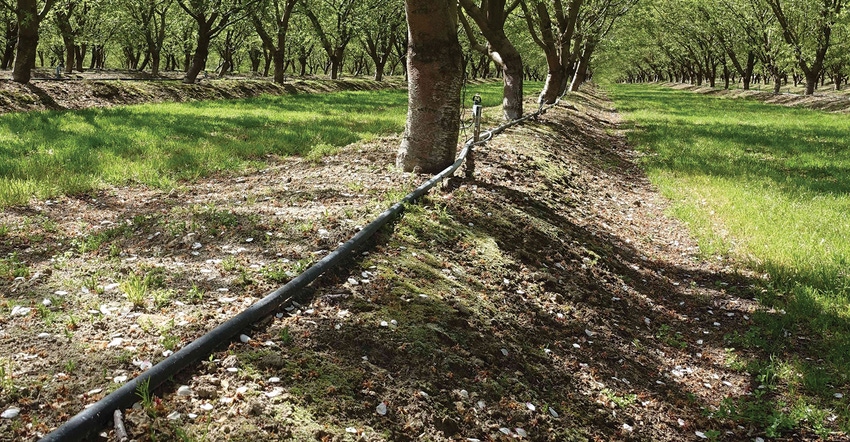
If it ain’t broke, don’t fix it.
But if it is broken, conventional wisdom said it’s time to get out the duct tape and figure out a repair. That’s especially true when it involves irrigation system maintenance before post-harvest winter sets in. Taking care of this year’s problems sets growers up with improved irrigation for next year.
“Considering the water issues the industry faced this year, it’s imperative for growers to do the simple things that will ensure their irrigation system is operating efficiently,” said Tom Devol, field outreach manager for the Almond Board of California.
Devol suggests that with the 2021 harvest in the record books, now is the appropriate time for flushing irrigation lines and sub-mains and checking riser t-screens for clogging. In his words: “Putting your irrigation system to bed clean greatly benefits growing next season.”
In fact, to make basic maintenance even easier, ABC has developed a Pathway to Irrigation Improvement guidebook to learn some small ways to improve irrigation practices.
The guide, available for downloading and printing from ABC’s website, was designed to help growers track progress in implementing irrigation best practices. Four sections ---- Irrigation Systems; Water Use; Soil Monitoring and Plant Water Status, and Management, have specific practices noted as either fundamental, intermediate, or advanced.
Cited as an example under Irrigation Systems: Growers at the fundamental level would regularly record system pressure variations and calculate an average application rate while irrigating. Those at the intermediate level take it a step higher by measuring distribution uniformity in an effort to “achieve more crop per drop”. Advanced level growers would look to employ the most efficient practices on a regular basis.
Said Devol: “For this guide, we referred to the incredibly-detailed 149-page Almond Irrigation Improvement Continuum (created by the Almond Board and UCANR) and restructured it with simplified visual cues. This way, when growers approach the Continuum and want to refer to specific sections that will help them reach the next level of efficiency, they can reference this guide to quickly understand where in the larger Continuum they should look for further details.”
Maximum efficiency
Striving for maximum efficiency in irrigation systems, Devol advises the first step for any grower is to know how their specific irrigation system utilizes water in order to properly evaluate system performance.
The second step involves how water is used. “How much do your trees need,” he asks. Once answered, the next step is to understand how much water is being used.
Other variables include soil moisture and its proper management, especially during period when trees may be experiencing greater stress. About 75% of growers still use visual means to determine stress instead of using a pressure chamber which provides a more accurate analysis of stem water potential
Then the variables are put together to form a ‘best practice’. “When you know what you’re doing, you will know how to better manage it. First, know your need, how much water your system is putting out and how to measure it. That will help you determine how to better manage it.
“Working with growers up and down the state, I can see where California almond growers as a whole are excelling as well as where an increase in improved practices could be achieved.”
Devol said the purpose of both the Irrigation Continuum and the newly-developed guide is to help growers move closer to the industry’s Almond Orchard 2025 goal of reducing water use by an additional 20% beyond the 33% water use reduction already noted over the past two decades.
About the Author(s)
You May Also Like




